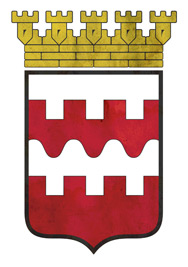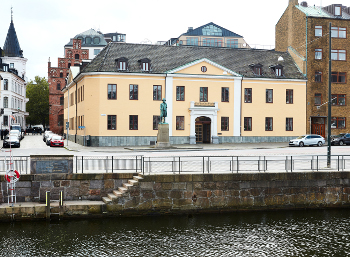The Hansa Club in Malmö opened its doors on 30 January 2002. Its aim is to provide a forum for pleasant social interaction, along the lines of the English gentlemen’s clubs of old. The home of the club is the thirteenth-century building Dringenbergska Gården, Norra Vallgatan 66. We currently number about 170 members, for whom the club has come to be a valuable network.
The coat of arms of the Hansa Club was designed by Sweden’s foremost herald of the past, Jan Raneke, who died in 2008. The arms were to encapsulate the historic importance of the water and the Hanseatic League for the city of Malmö. The colours, or the tinctures as they are known in the language of heraldry, are red and white, corresponding to those used in the coat of arms awarded to Malmö, formerly Elbogen, by Eric of Pomerania in the fifteenth century. The shield bears waves in white and battlements in red, characterising the buildings of the Hanseatic period, and is topped by a crown of stonework symbolising the city and its rights.

